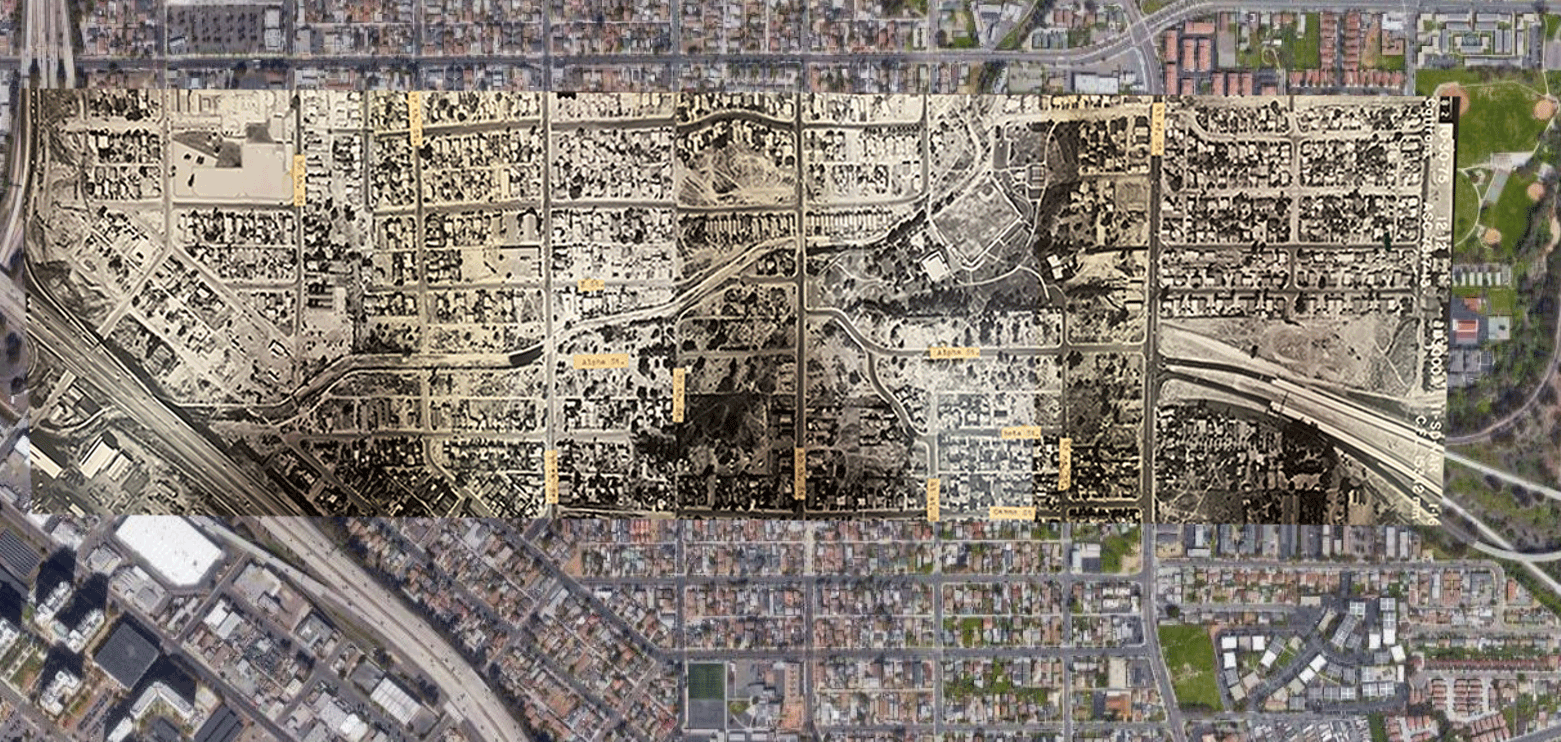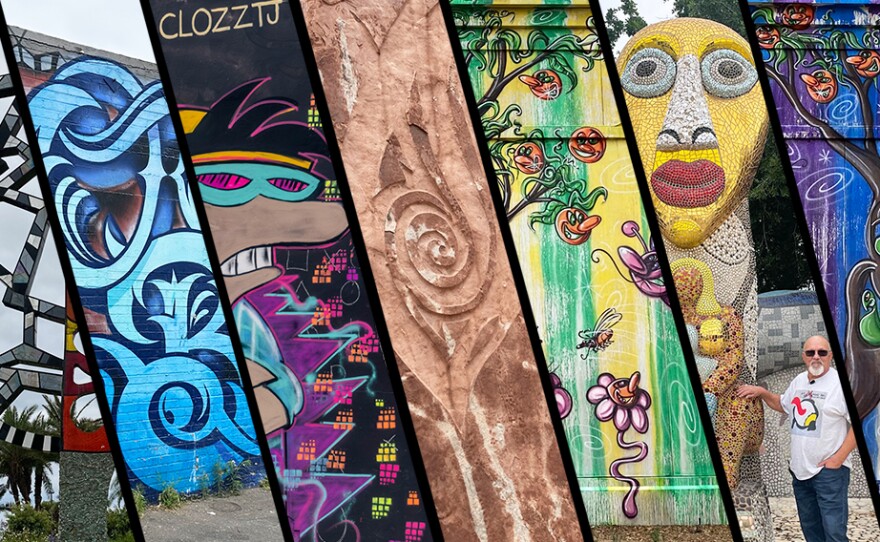Note: The history of Highway 252 is covered in episode 3 of the new KPBS podcast Freeway Exit.
At the center of Southcrest Trails Neighborhood Park sits a public art project inspired by the community's decades-long battle to stop a freeway.
The circular plaza was designed by artists Ingram Ober and Marisol Rendón. The husband and wife duo were selected by the city's Commission for Arts and Culture to develop a public art installation for the park, which opened in 2018.
"This park was, I think, the city's way of trying to heal an open wound," Ober said.
In the late 1960s and early 1970s, the California Division of Highways seized 66 acres of property in Southcrest to build Highway 252. It would have been an east-west connector between I-5 and I-805.

Decades of community opposition ultimately forced the state to abandon the freeway project and sell the land back to the city of San Diego, which gradually redeveloped it into housing, parks, a shopping center and an elementary school.
Ober and Rendón learned the backstory through meetings with local residents.
"Members of the neighborhood and the community came out, shared stories of the loss of this land when it was seized for highway projects, the displacement of some of those families that happened back then, and then stories about the over 20-year struggle that they were in to have the city then redevelop it in a different way," Ober said.

Those interviews inspired the artists to photograph residents pronouncing the various names their community has been known by — Southcrest, Shelltown, Chollas Creek and home. Those portraits were merged into composite images and turned to molds, which then produced roughly 380 concrete bas-relief sculptures.
The end result is a chorus of community members reclaiming both their land and their neighborhood's identity.
Rendón said community engagement is foundational to their work. But she added good public art requires a lot more.
"Even something not as poetic, like for example the budget," Rendón said. "This is something we sometimes don't talk about. But at the same time it's so crucial to the artist, to be able to develop something that really responds to so many different things."
-
The American freeway is born during a time of boundless optimism for the automobile … how did we not see the dark side?
-
In San Diego, a group of activists organize to stop a highway from destroying their predominantly Black and Latino neighborhood.











